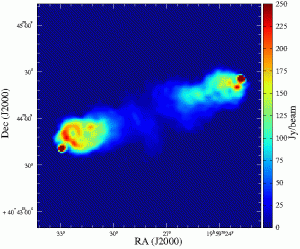 |
The sparsity reconstruction approach find once again a practical application in astronomy. The CosmoStat group developped a new way (using a FISTA implementation) to solve the aperture synthesis inverse problem posed by radio interferometry imaging. In the scope of LOFAR and SKA, a study has been published demonstrating the performance of the method (in terms of photometry, fidelity, super-resolution) while being compatible with Direction-Dependent effects. |
What’s next? This method is currently applied for testing different array configurations of the SKA for weak lensing studies from radio imaging.
New version of the method is being developed during the PhD thesis of Ming Jiang (under supervision of J.-L. Starck and Julien N. Girard)
References
- Garsden, Girard, Starck, Corbel et al., LOFAR Sparse Image Reconstruction, A&A, Vol. 575, A90 (2015) link to A&A
- IRFU/CEA news post (in french): here

